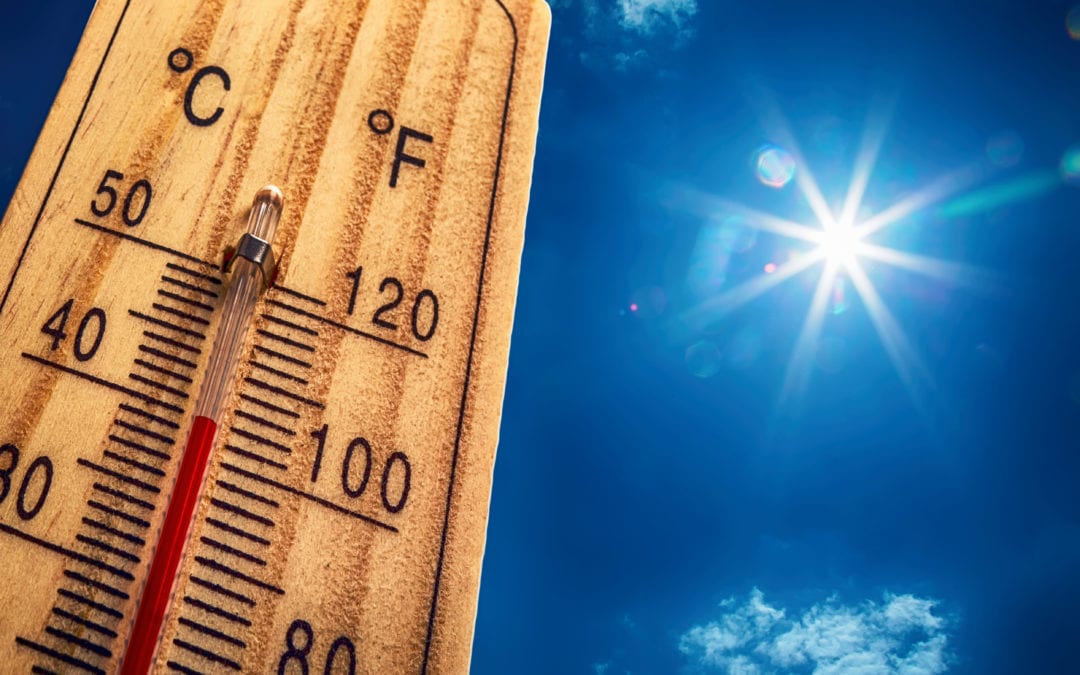Heat Stress: The Basics
Know the signs and symptoms of heat stress and how to respond to the different stages — Prevention is the key.
Avoid Extreme Temperature Fluctuations
Your body needs to acclimate itself to the temperature you will be working in. The continual use of very cold water or environments prevents you from adjusting to your work environment and makes it more difficult to function in the heat.
Post & Use the Urine Chart
Post and use the urine chart provided below in the restrooms and in readily visible places to help personnel determine if they are properly hydrated. The proper water intake is a key to prevention. Be sure to avoid stimulants such as tea coffee, soft drinks or other caffeinated beverages.
Stop Work Authority (SWA)
Stop Work Authority should be used when ever conditions warrant the need for actions above and beyond that which are in place. Individuals suffering from heat stress may no longer be able to make logical decisions. Sound reasoning and logic is not something we can expect from someone suffering from the later stages of heat stress. Use Stop Work Authority…
Observations / Inspection
The deliberate act of sending personnel to the work site with the sole intent of observing for the signs and symptoms of heat stress can also be a useful tool when it comes to prevention. Consider the use of observation as a prevention tool.
Educate, Train & Post
Use this document and or other heat stress related topics frequently to coach, educate and train personnel. Everyone should know how to prevent heat stress and the signs, symptoms and first aid measures. Just saying don’t get overheated will not suffice. Posting the following pages throughout the work place can be a helpful educational tool.
Prevention
Adapt to the Heat
Workers exposed to extreme heat should gradually get use to their environment over a one-two week period. This means that on your first week in a hot environment, you may only be able to do half the work that a fully adapted worker would do. Each day, your workload increases slightly until you are able to operate at “full steam”.
Drink Water Frequently
Sweating results in water loss and is one of the ways your body cools itself down. The only way to replace the loss is to drink water frequently. You should drink at least 8 ounces of water every 20-30 minutes while working in hot environments. Avoid stimulants such as tea coffee, soft drinks or other caffeinated beverages.
Mandatory Breaks
When heat stress relates illness is a threat 10-20 minute breaks shall be taken every 2 hours as a minimum. Engine rooms or other areas where temperatures exceed the norm will require additional breaks and or precautions.
Wear Personal Protective Equipment
Personal Protective Equipment (PPE) for hot environment can range from ordinary work clothes made from “breathable” fabrics (cotton), cooling vests, to specially designed suits that are cooled by air, ice and even portable air conditioners.
Use Engineering Controls
Engineering controls such as fans, ventilators, exhaust systems, and air-coolant or conditioning systems.
Keep Cool
Persons who work in hot environments should become familiar with first aid techniques for heat stress – heat stress is dangerous and can be life threatening, but it’s also preventable.
Signs, Symptoms & First Aid
Heat Cramps
Symptoms include muscle twitching and painful spasms in the legs, arms, or abdomen. Apply firm pressure or gently massage affected muscles. Move to a cool environment, continue to administer water until re-hydrated and seek medics/physicians advice before returning to work.
Heat Exhaustion
Symptoms include dizziness, fatigue, headache, breathlessness, thirst, clammy skin, profuse perspiration, elevated body temperature, and tingling sensations in the hands or feet. Move the victim to a cooler environment, position the victim on his or her back and elevate the legs 8 to 12 inches. Loosen the victim’s clothing and apply cool, moist cloths to the body, or fan the victim. Continue to administer water until re-hydrated and seek medics/physicians advice before returning to work.
Heat Stroke
Symptoms include dry, hot skin, no sweat, rapid pulse, bluish or red skin color, high body temperature (105°F or more), mental confusion and unconsciousness. Immediately call an ambulance. Do not offer the victim any stimulants, such as tea, coffee or alcoholic beverages. Give the victim water if he or she is coherent and can swallow. Move the victim to a cooler environment. Remove outer clothing and then do one of the following:
- Continually sponge the victim with cool water
- Repeatedly administer cold packs
- Immerse in a tub of cool (not ice) water
- If no water is available, fan the victim to promote cooling.

